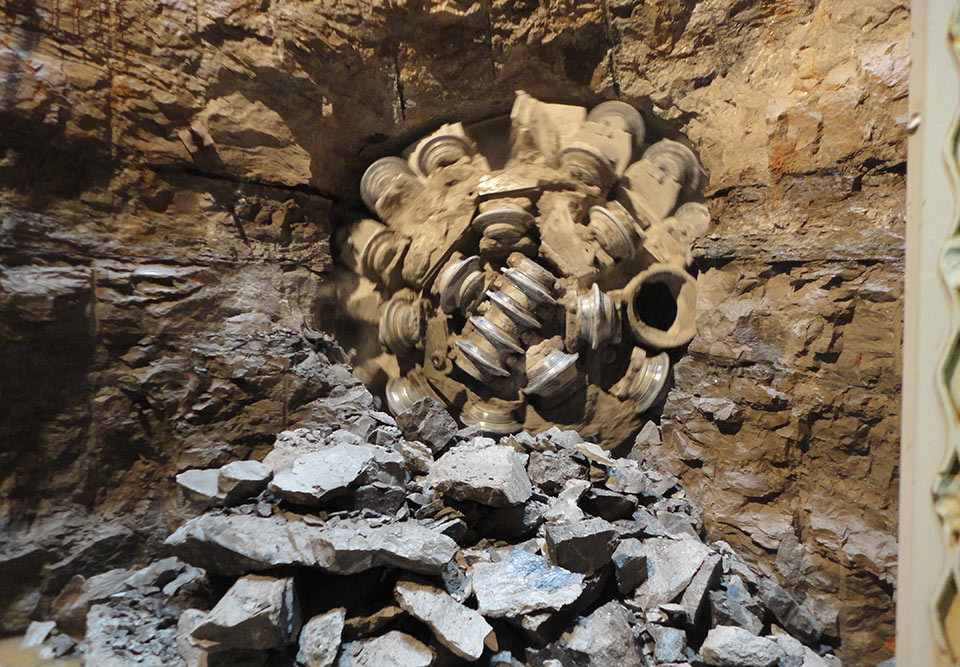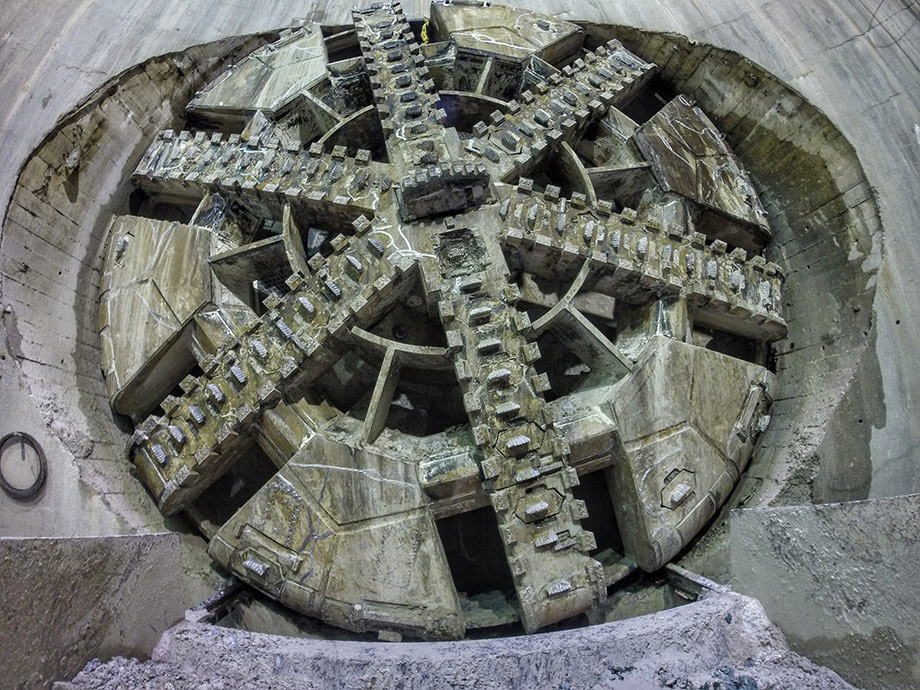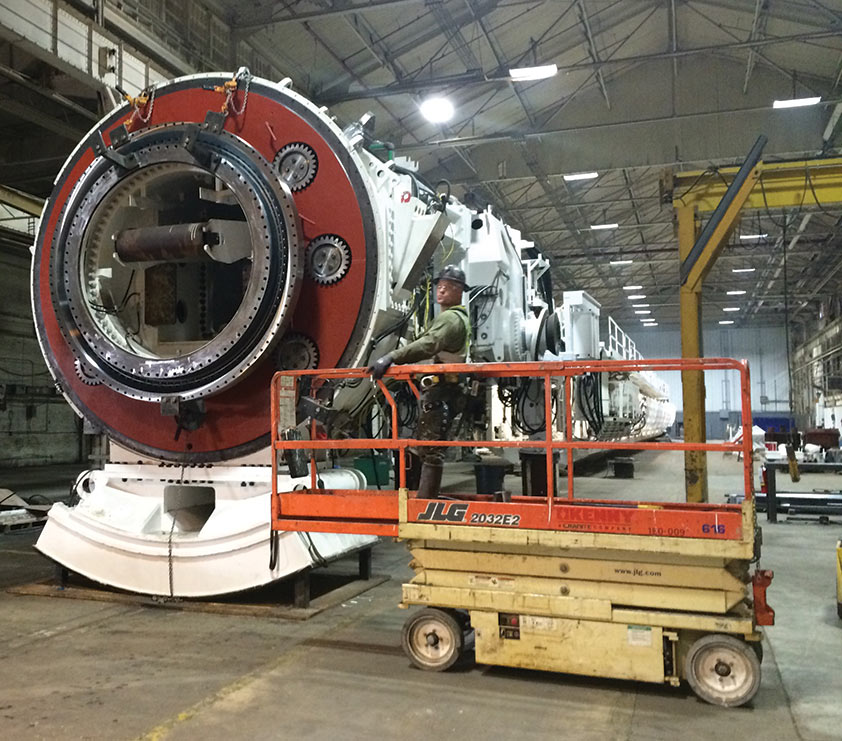Much has been made worldwide of the difference in performance between new and rebuilt TBMs. Often, a machine’s age is cited as the reason for a difference in performance. At metro projects ranging from Istanbul to Mumbai to Singapore, specifications for TBMs are aimed at keeping machines that are “too old” from being used. But does the mileage under a TBM’s belt really disqualify it, or does a difference in machine performance have more to do with TBM design - whether new or rebuilt?

A custom design to the specific requirements and geology of a project is just as important on a rebuilt machine as a new one. For example, a contractor may wish to save money by purchasing a used TBM and rebuild it to its original specifications. A 3m diameter main beam TBM rebuilt to the same diameter and specifications will cost less than rebuilding the same machine to an increased 4m diameter size and adding custom elements. But are the savings truly obtained if the original TBM specifications do not fit the geology? Cutterhead configurations are a particularly important example, with cutter spacing, cutting tools, cutterhead geometry, and muck openings, all coming into play and greatly affecting the rate of penetration.
A good example of this concept is illustrated at the Túnel Emisor Oriente (TEO) in Mexico City where the geology along the 62km long tunnel at up to 150m deep is highly variable. One 8.93m EPB was used to bore two separate lots with very different geology. For Lot 1, the machine was used with its original cutterhead, fitted with soft ground cutting tools, and a two-stage screw conveyor, to excavate watery lake clays with great success. The machine bored 4.6km to complete its section of critical path tunnel.
The cutterhead was designed as adaptable for both hard rock and soft ground configurations, and before beginning excavation of the 8.6km long drive of Lot 5, modifications were needed. Grizzly bars were fitted across the muck openings and heavy-duty abrasion-resistant wear plating was added. Wear plating was also added to the screw conveyors so they could be used in open rock-excavation mode. Lot 5 is one of the most challenging on the project, passing at maximum depth and through geology ranging from lake clays to abrasive full-face basalt. Despite the challenges the machine has been able to achieve a project record of 30m in 12 hrs, showing that an EPB can indeed be used in very different conditions.
If the age and number of projects bored by a TBM is seen by some as an issue, one need only look at the wealth of record-breaking projects achieved using rebuilt machines. More than one third (36%) of currently standing world records have been broken using a refurbished TBM, some of them in service for decades. Most recently, a Robbins TBM manufactured in 1980 achieved three world records in the 6m to 7m diameter range at the Deep Rock Tunnel Connector Project (DRTC) in Indianapolis, Indiana, USA. The 6.2m diameter main beam TBM had previously bored at least five other hard rock tunnels including the New York City Second Avenue Subway running tunnels through hard Manhattan Schist.

Design updates of the machine for the DRTC project included a new back-loading cutterhead with 19-inch disc cutters, variable frequency drive (VFD) motors, and a rescue chamber. The records broken included:
The machine is currently boring the next phases of the DigIndy network, a further 28km in addition to the 12.5km DRTC already completed.
The rebuilding of TBMs, both the process and the standardization of rebuilds, has become a focus for the industry as more projects with multiple machine requirements and short lead in time frames are being proposed. The focus has been further highlighted by ITAtech, the technology-focused committee for the International Tunnelling and Underground Space Association (ITA-AITES) that produced guidelines on rebuilds of machinery for mechanized tunnel excavation in 2015. While the guidelines are relatively new, Robbins has a long history of delivering robust machines. About 50% of our annual production comprises rebuilt TBMs and 50% new.
For Robbins, the preferred term is rebuilt, which describes any manner of creating a custom TBM from already existing components. The ITAtech guidelines introduce different terminologies depending on the extent to which a TBM is rebuilt. They are described here briefly:
The guidelines describe the requirements of each process in order to designate a TBM as either refurbished or remanufactured, but in reality the majority of rebuilt TBMs may be somewhere in between these qualifications.
In terms of the international guidelines, they are certainly necessary and welcomed. However, the strictness of the guidelines makes them hard to adopt for the majority of TBM rebuilds, which are customized based on project needs. The ITAtech guideline is also missing something else - the definition of what makes a TBM new. While opinions from different suppliers vary, Robbins is perfectly clear on this topic. If you are buying a new TBM, then it is 100% new, with only 100% new components. We strongly believe the whole industry should commit to this definition of what makes a TBM new, and this definition should be added to the guidelines.

It is also essential to consider the total life cycle of a machine, even in its beginning design stages. This is by far the most economical and sustainable way of thinking. Designing machines with ease of rebuilding in mind ensures that the manufacturer does not have to start from scratch every time a machine needs preparation for a new project or drive. It also results in time, cost and energy savings when the time comes to rebuild a machine and pass it on to the customer.
Over the years Robbins has built a quality assurance system that ensures that when we deliver a rebuilt machine, either to the original or to a modified configuration, we still adhere to a design life of 10,000 hours. This standard also includes checks to make sure that all the components are in a functional condition of as-new or new. Due to our long experience of rebuilding TBMs, we can offer in principal, the same warranty on a rebuilt machine as for a new machine.
Our experience is that, in order to offer the same design life and same warranties on a rebuilt machine, the initial design of the TBM needs to consider the TBM will be used on several projects. This means that the major structures of the machine will need to be strong enough to survive even the toughest conditions and that worn parts can easily be replaced. If the machine is not properly designed for multiple projects, there will be a need to do major work to get the TBM in a working condition, either in its original or modified configuration.
One can argue that project owners typically have only one project and that the condition of the TBM and the suitability of its rebuild is therefore not essential. This is something that is also reflected in many of today’s tunneling projects, where the commercial consideration is often given far more attention than technical attributes. We would argue, however, that a sturdy and robust design of the TBM from the start will give the project more uptime, higher production rates and better flexibility if unexpected conditions are encountered, making it an efficient and effective insurance against many types of obstacles.
In short, the answer is yes, though like many things the conditions must be right. A rebuilt machine should not be a compromise, in diameter or design. The machine’s rebuilt specifications should fit that project’s geology. Once in operation, maintenance is key, both towards upkeep of the TBM and to keep costs of future rebuilds down. Modern monitoring equipment can also go a long way towards ensuring proper operation of the TBM. Major electrical systems are today very reliable. PLCs, and other controls can monitor oil, vibration, loading and many other machine parameters so that crews have a good idea of the current state of the machine at any time.
Maintenance while storing the TBM between projects can also maximize equipment life. Storing components indoors, coating the equipment with anticorrosive spray and making sure the main bearing is filled with oil will maintain the machine for further deployment. Owning and using a rebuilt TBM has added hidden benefits, including familiarity of machine operation and proven performance for that particular piece of equipment.

Overall, there are many benefits, both obvious and hidden, to using a rebuilt machine, particularly if it is owned and used by the same crew. A lower up-front cost and a shorter delivery time are the obvious benefits, but a rebuilt machine, that has already bored tunnels successfully, also has proven itself and the abilities of the equipment and crew. The learning curve is also lessened when a crew is familiar with a particular TBM’s operation.
TBM design for the long haul is simply a cost effective, energy efficient and sustainable way of thinking about tunnel boring. The undeserved reputation of used machines having lower advance rates is simply a function of the rebuild process or lack thereof. With a properly rebuilt machine, rebuilt specifically for the geology of the new project, used TBMs can - and have - demonstrated that they are fully capable of world record excavations.
|
|
|
|
|